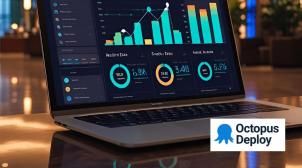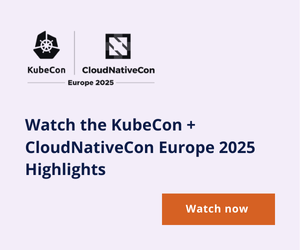-
Tempus Multi-Cloud Asset Inventory
Discover how Tempus uses CloudQuery to manage multi-cloud environments at scale, leveraging GCP, Terraform, and Grafana for compliance monitoring and cloud security. Learn from their real-world deployment fetching resources across 80+ AWS accounts and 1000+ GCP projects.
-
How SkyHawk Security Powers their Cyber-Security Platform Data Collection with CloudQuery
Discover how SkyHawk Security, a leading cloud cybersecurity firm, supercharged its platform by integrating CloudQuery. Learn how they streamlined multi-cloud data collection, saved engineering time, boosted performance, and ensured compliance, empowering their team to focus on core security innovations.
-
Say Hello to AWS Cost and Usage Reports Integration and Report in CloudQuery
CloudQuery announces its new AWS Cost and Usage Reports (CUR) integration—empowering engineering teams to analyze and optimize cloud spend directly from infrastructure data. Learn how to gain cost visibility, allocate budgets by tags or teams, and uncover hidden cloud expenses with powerful queries and dashboards.
-
How Hexagon built an Infrastructure Data Lake with CloudQuery
Discover how Hexagon, a global digital reality leader, built a serverless infrastructure data lake with CloudQuery, AWS S3, Glue, and Athena. Learn how they achieved centralized visibility, SQL querying, and historical insights across all cloud accounts, with virtually zero maintenance and significant cost savings.
-
Beyond skeleton pipelines: who owns your software pipeline?
Are your "skeleton pipelines" secretly killing your velocity? Discover the hidden cost of an "ownership vacuum" in software delivery, wasting precious dev hours. Learn why treating pipelines as a product, not an afterthought, is crucial for improving efficiency, reducing technical debt, and making every deployment a smooth success.
-
Guestline Saves 2,000 Hours Per Release Using Tenants in Octopus Cloud
Guestline transformed a 20-year-old manual deployment process for its EPOS software by adopting Octopus Deploy. With Octopus Cloud and tenanted deployments, Guestline automated updates to over 800 hotel customers, saving thousands of hours and significantly improving consistency and speed. The team now delivers updates twice a month, enhancing customer experience and enabling faster cloud adoption across its global footprint.
-
Recruit Wizard scaled and moved to daily deployments with Octopus Cloud
Recruit Wizard transformed its software delivery by adopting Octopus Deploy for full deployment automation across Kubernetes and virtual machines. Moving from quarterly to daily deployments, the team now uses Config as Code and Runbooks to streamline releases, reduce errors, and empower non-engineering staff to run operational tasks independently. With Octopus Cloud, they’ve modernized and scaled their deployments while staying focused on growth and innovation in recruitment software.
-
The ten pillars of pragmatic deployments
Unlock the secrets to flawless software delivery! Explore the "10 Pillars of Pragmatic Deployments" that ensure repeatability, visibility, and auditability. Learn how to master rolling forward, standardize processes, and coordinate releases for robust, high-performing software pipelines.
-
Stack Overflow Uses Config as Code in Octopus for its Enterprise Solution
Stack Overflow adopted Octopus Deploy to streamline and scale its enterprise software delivery using tenanted deployments, automation, and Configuration as Code. By integrating application code, build, and deployment processes in a single GitHub repo, the team improved CI/CD efficiency, enabled better collaboration through pull requests, and reduced deployment times across multiple customers. Octopus's Azure support, API flexibility, and excellent customer service empowered Stack Overflow to standardize and mature its DevOps practices.
-
Five Reasons Standalone Vulnerability Scanning Isn’t Enough in 2025
Vulnerability scanning alone doesn’t cut it anymore. While it’s long been a core security practice, scanning tools can’t tell you which vulnerabilities are exploitable, how attackers would target them, or which ones pose real risk. This article explores the limitations of vulnerability scanning, the shortfalls of traditional vulnerability management, and why organizations must adopt a risk-based, context-driven approach to application security. Learn how to prioritize based on exploitability, integrate security across the SDLC, and move toward continuous, intelligent threat detection.
-
Workload Identity Meets Supply Chain Security: Teleport's Sigstore Integration
Modern software supply chains face increasing complexity and risk, especially from supply chain attacks like SUNBURST. This article explores how Sigstore and Teleport's Machine & Workload Identity can fortify your CI/CD pipeline. Learn how Sigstore enables keyless, verifiable artifact signing, and how Teleport integrates these signatures into workload attestation using SPIFFE-based SVIDs. Discover how to enforce policies that block compromised containers from accessing sensitive resources, and how cryptographic identity can replace static secrets for secure service-to-service communication. A must-read for DevSecOps teams aiming to embed security into the development lifecycle.
-
Secure and Scalable Kubernetes for Multi-Cluster Management
Managing multi-cluster Kubernetes environments across clouds and data centers introduces complexity, security gaps, and observability challenges. This article explores how Calico Cluster Mesh provides seamless inter-cluster connectivity, fine-grained security policies, intelligent traffic management, and unified observability—empowering teams to build scalable, secure, and efficient Kubernetes architectures. Learn how companies like Box leverage Calico to enforce zero-trust security and simplify multi-cluster operations.
Filter & Sort


















